To resize handmade soap recipes, use lye calculators for precise measurements, maintain original oil ratios, and convert ingredients to percentages for easier scaling. Calculate your mold capacity (Length × Width × Height × 0.4) to determine oil amounts needed. Adjust water ratios proportionally, typically maintaining a 2:1 water-to-lye balance. Scale fragrances based on total oil weight, and adjust additives accordingly. Always test small batches before large-scale production. These techniques guarantee consistent quality across any batch size.
7 Tips For Resizing Handmade Oil Soap Recipes
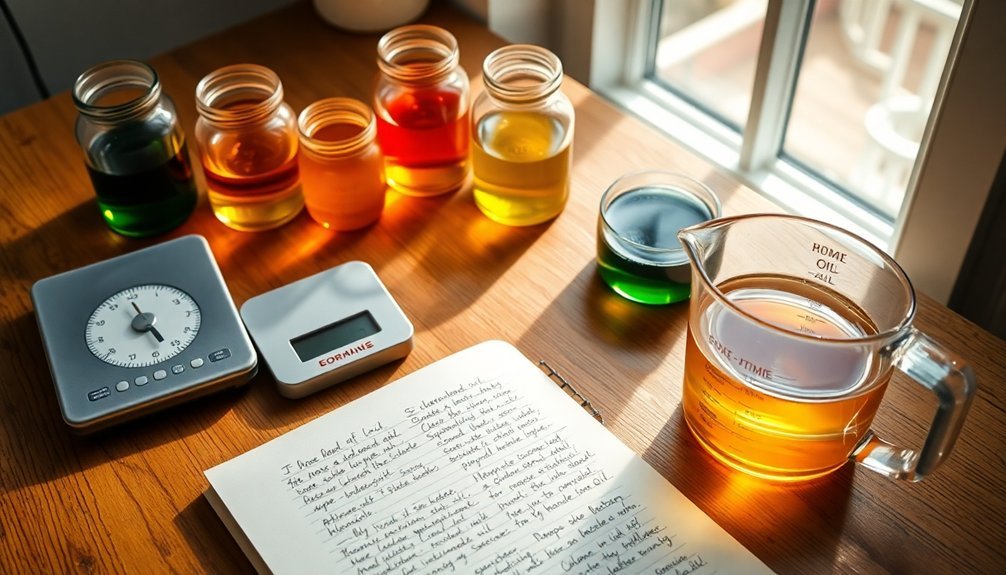
Whether you've found the perfect soap recipe but need a different quantity or want to adapt it to fit your new mold, resizing handmade oil soap recipes requires precision and careful calculation.
Start by using a reliable lye calculator to input your current recipe's oil amounts and desired superfat level. When adjusting the total oil weight, always maintain the original oil ratios to preserve your soap's properties.
Precision matters! Maintain exact oil ratios when scaling recipes to preserve the unique qualities your soap recipe was designed to deliver.
For example, if you're increasing from 30 to 45 ounces, each oil should keep its same percentage in the formula.
Calculate the total yield (oils, lye, and water) to match your mold capacity. Remember to adjust fragrance oils proportionally—if you're using 2 ounces for 30 ounces of oils, use 3 ounces when resizing to 45.
Always make a small test batch before scaling up your resize recipe.
Understanding the Relationship Between Oil Weight and Total Yield
When crafting handmade soaps, you'll quickly discover that oil weight represents only a portion of your final product's mass. In cold process soap recipes, your total yield includes oils plus lye and water—essential components that drive the saponification process.
For instance, 33 ounces of oils might yield nearly 49 ounces of finished soap.
To successfully resize any recipe for your specific mold, remember:
- Calculate the total yield by adding the weight of all ingredients, not just oils
- Maintain consistent ratios between different oils to preserve your soap's unique properties
- Adjust lye and water proportionally to guarantee proper saponification and soap quality
Understanding this relationship allows you to confidently scale recipes up or down without compromising the integrity of your handmade soap.
Calculating Your Mold's Capacity With Precision
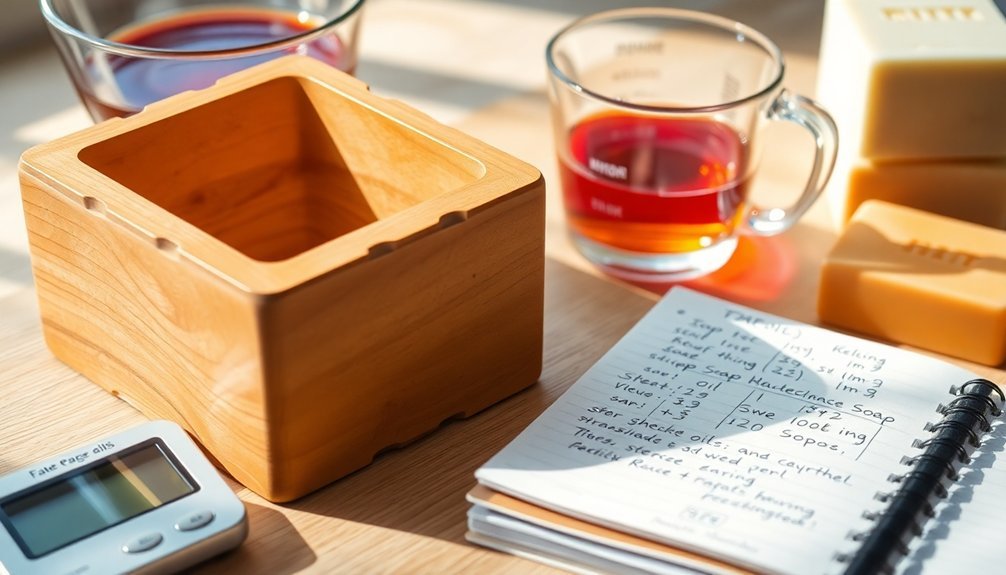
To determine exactly how much soap your mold will hold, start by measuring its interior dimensions in inches.
Multiply the length, width, and height together, then multiply by 0.4 to calculate the oil weight capacity in ounces.
You'll need this precise measurement to properly size your recipe, ensuring your soap batch fits perfectly into your mold without overflowing.
Measuring Your Mold
The first step in properly sizing your soap recipe is accurately measuring your mold's capacity.
You'll need to calculate how many ounces of soap your mold can hold using the formula: Length × Width × Height × 0.4. This conversion factor accounts for the average density of soap ingredients.
For accurate measurements, you should:
- Use a ruler to precisely measure your mold's internal dimensions in inches
- Calculate your mold's capacity using the formula (for example, a 10 × 3.5 × 2.75 inch mold holds approximately 35 ounces)
- Verify your scale has a tare function to properly weigh liquid ingredients
Remember that different oils have varying densities, which can affect your final weight.
Always match your recipe's total yield with your calculated mold capacity to prevent overflow during pouring.
Volume Calculation Formula
Calculating your mold's capacity precisely guarantees your soap recipe will fit perfectly without messy overflow or disappointing underfills.
The simple volume calculation formula is: Length × Width × Height × 0.4 = Mold capacity in ounces of oil.
For example, if your mold measures 10 × 3.5 × 2.75 inches, your calculation would be: 10 × 3.5 × 2.75 × 0.4 = 35 ounces of oil.
Remember that your homemade soap's total yield includes not just oils, but also lye amount and water amount.
When you calculate mold's capacity correctly, you can confidently resize recipes to match exactly what your mold can hold.
Always measure your dimensions in inches before applying the formula to guarantee your soap recipe's success every time.
Converting Recipe Oils to Percentages for Easy Scaling
Converting your soap recipe oils to percentages begins with calculating the total weight of all oils combined.
You'll then determine each oil's percentage by dividing its individual weight by the total oil weight and multiplying by 100.
This percentage-based approach guarantees you'll maintain consistent soap properties whether you're scaling up for larger batches or scaling down for test runs.
Understanding Oil Percentages
When working with soap recipes, understanding oil percentages becomes essential for flexible batch sizing. To convert your recipe, simply divide each oil's weight by the total oil weight and multiply by 100. For example, if you use 14 oz olive oil in a 28 oz total oil recipe, olive oil represents 50% of your formula.
Working with percentages offers three key advantages:
- Freedom to resize recipes without complex calculations while maintaining oil ratios
- Quick adaptation to different mold sizes by applying percentages to your desired total oil weight
- Greater control over your formulations, allowing you to adjust amounts precisely for cold process soap recipes
A soap calculator can automate these conversions, making it easier to understand each oil's contribution and scale your recipes efficiently.
Calculate Total Weight First
The first step in successful recipe scaling is determining your total weight. To do this, sum the weights of all ingredients—oils, lye, and water.
For example, if you're using 14 ounces of olive oil, 7 ounces of coconut oil, and other oils totaling 28 ounces, this becomes your total oil weight.
Next, convert each oil to a percentage by dividing its weight by the total oil weight and multiplying by 100. In our example, olive oil would be 50% and coconut oil 25%.
Once you've turned your recipe into percentages, you can easily resize it to fit any mold. This method guarantees consistent results regardless of total volume.
When scaling your recipe up or down, you'll simply calculate new oil amounts based on these percentages, maintaining the same ratio of ingredients.
Maintain Consistent Ratios
Successful recipe scaling relies on maintaining consistent ratios between ingredients, which you'll achieve by converting your oils to percentages.
First, calculate your total oil weight, then divide each oil's weight by that total and multiply by 100. This converts absolute measurements into relative proportions that stay consistent regardless of batch size.
When you need to resize recipes for your handmade soap, these percentages become invaluable:
- Precise control – Calculate exact amounts needed for any batch size
- Simplified adjustments – Easily modify recipes without compromising quality
- Foolproof scaling down – Maintain the perfect balance of oils even in smaller batches
Always check that your percentages total 100% to guarantee your final soap product maintains the properties you expect.
Consistent ratios guarantee consistent results.
Using Lye Calculators to Maintain Perfect Formulations
Despite their intimidating appearance, lye calculators serve as essential tools for any soap maker looking to resize recipes without compromising quality. When you're adjusting a recipe for a different mold size, these calculators allow you to input your oil weights and desired total yields to automatically determine the correct proportions.
Always specify your superfat percentage when using a lye calculator to guarantee your soap maintains its moisturizing properties. The calculator will precisely adjust water amounts and lye quantities to match your new oil measurements while preserving the original formula's integrity.
Before starting your soap making process, double-check all calculations against your mold size requirements. Trusted calculators like Bramble Berry's make resizing recipes straightforward, eliminating guesswork and helping you achieve consistent results every time you scale your soap recipes.
Adjusting Fragrances and Additives Proportionally
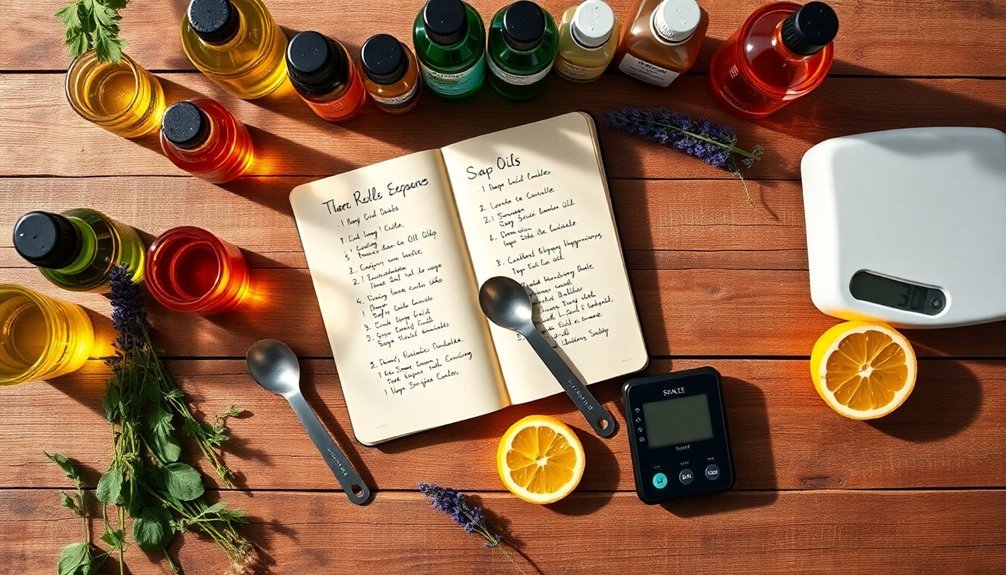
Properly adjusting fragrances and additives represents a critical yet often overlooked aspect of resizing soap recipes. When scaling your original recipe, you'll need to make proportional adjustments to maintain the perfect scent strength and texture.
Precise fragrance adjustment: the secret ingredient to successfully scaling soap recipes without compromising quality.
Always use a fragrance calculator to guarantee your fragrance oils remain within safe usage limits for your new batch size.
For successful soap-making when resizing recipes, remember:
- Calculate additives based on the new total oil weight—if doubling from 16 to 32 ounces of oils, you'll need twice the fragrance oil.
- Adjust colorants carefully to achieve consistent visual appeal across different batch sizes.
- Modify exfoliants proportionally to maintain the desired texture and exfoliation properties.
Record all adjusted amounts for future reference, guaranteeing consistency in your soap-making journey.
Managing Water Ratios When Scaling Recipes
When scaling your soap recipe up or down, water ratios require careful attention as they directly impact the final product's quality.
Always adjust your water amount based on the new total oil weight, typically maintaining a 2:1 water-to-lye ratio for ideal results.
If you're using a water discount method, reduce water by 5-10% of the total weight to prevent excess moisture while preserving soap quality.
Remember that additives like purees affect your liquid requirements, so factor these in when calculating.
Precise recalculation of lye amounts is essential, as the water-lye balance determines successful saponification.
For streamlined recipe resizing, utilize a lye calculator that automatically adjusts water ratios alongside lye and oil weights based on your desired batch size.
This approach guarantees consistency across different-sized batches.
Frequently Asked Questions
What Is the Biggest Mistake First Time Soapmakers Make?
The biggest mistake you'll make is inaccurately measuring ingredients. You're likely to create imbalanced formulas when you don't carefully weigh components, especially lye. This affects your soap's safety, quality, and overall success.
How to Calculate Soap Mold Size?
To calculate soap mold size, multiply length × width × height × 0.4. This gives you the oil capacity in ounces. For example, an 8 × 3.5 × 2.5 inch mold holds about 28 ounces of oil.
What Not to Do When Making Soap?
Don't use inaccurate measurements, skip lye calculations, or neglect safety gear. You shouldn't assume yields without including all ingredients or make drastic recipe changes without testing. Always wear gloves and goggles when handling lye.
How Do You Make Homemade Soap Firmer?
You can make homemade soap firmer by increasing hard oils like coconut and palm, reducing water content, adding beeswax or stearic acid, allowing longer curing time, and using a lower superfat percentage.
In Summary
You've now mastered the art of resizing soap recipes without compromising quality. By understanding oil-yield relationships, calculating mold capacity, and converting to percentages, you'll never be stuck with the wrong batch size again. Remember to recheck your lye calculations and adjust additives proportionally. With these tips, you're free to scale any recipe up or down while maintaining the perfect soap every time.
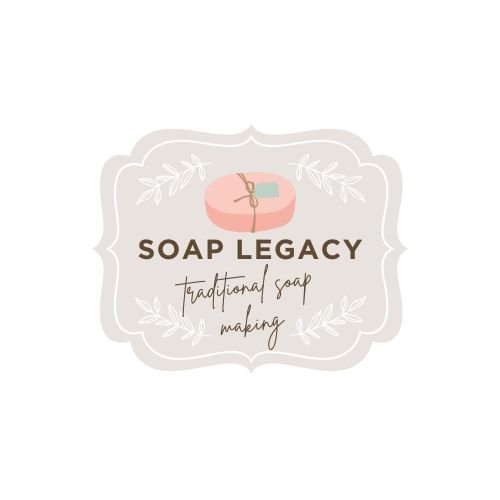
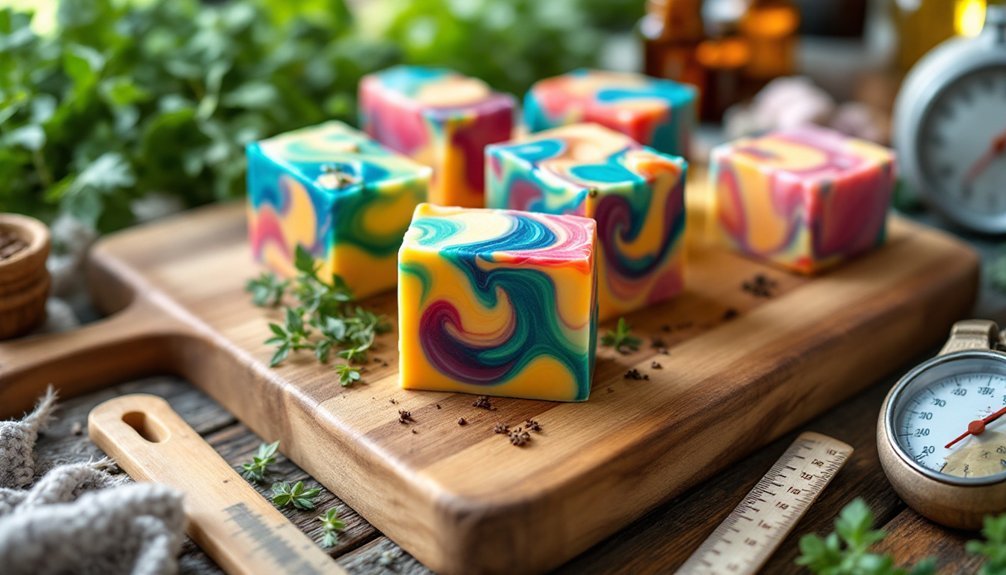
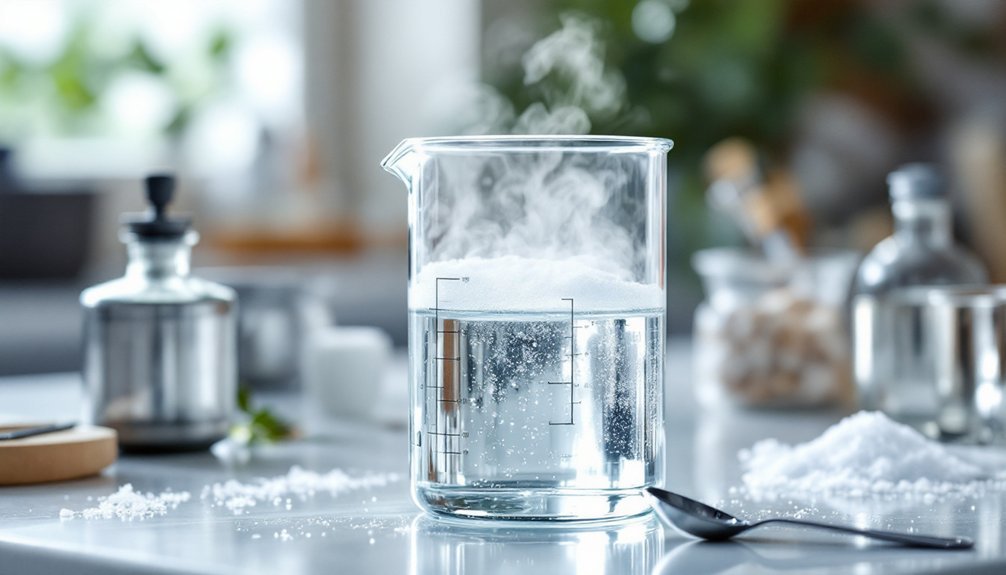
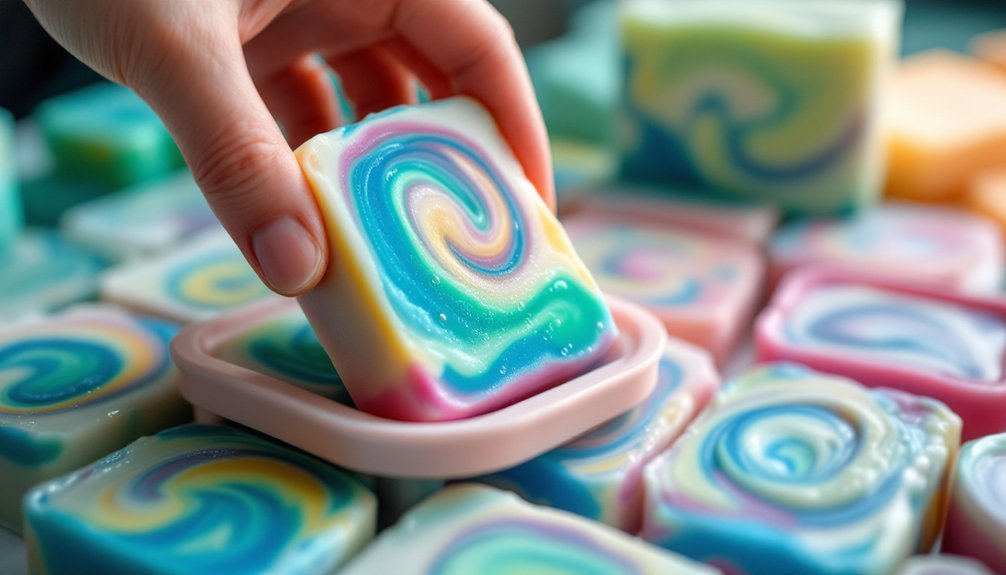

Leave a Reply